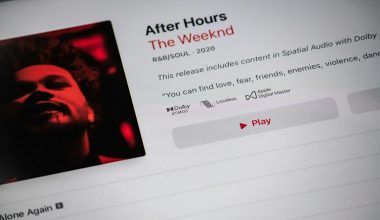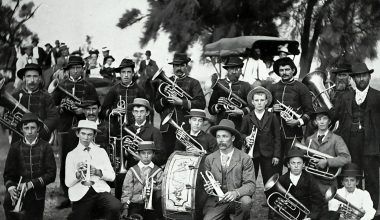Have you ever wondered how creators make money on YouTube? You’re not alone. youtube monitzation sharing revenue are fascinating topics, especially for aspiring content creators. If you’re ready to dive into the world of earning on YouTube, this guide will make it simple and easy to understand.
First, let’s start with the basics. YouTube monetization is the process of earning money from your videos through ads, memberships, and other revenue streams. Once you meet YouTube’s eligibility requirements, you can apply to the YouTube Partner Program (YPP). By joining the YPP, you unlock monetization features and become eligible for revenue sharing. Revenue sharing means YouTube splits the ad earnings with you. This process allows creators to earn a fair share while YouTube covers platform costs and development.
How YouTube Monetization Works
YouTube monetization relies heavily on advertisements. When viewers watch ads on your videos, you earn a portion of the revenue. But there’s more to it than just enabling ads. The type of ad, viewer engagement, and advertiser bids all impact how much you earn. Let’s break it down.
Ad Types and Revenue Sharing
YouTube offers several types of ads, including:
- Display Ads: These appear next to your video on desktop screens. They don’t interrupt the viewing experience.
- Overlay Ads: Semi-transparent ads that show up at the bottom of your video.
- Skippable Video Ads: Ads that viewers can skip after five seconds. These are the most common.
- Non-skippable Video Ads: Short ads that viewers must watch before the video starts.
- Bumper Ads: Very short ads lasting up to six seconds.
- Sponsored Cards: Ads displaying content relevant to your video.
Each ad type contributes differently to revenue sharing. Skippable ads, for instance, only generate revenue if viewers watch for at least 30 seconds or click on the ad. Non-skippable ads ensure revenue since viewers must watch them entirely. This mix of ads means your earnings depend on your audience’s behavior.
YouTube’s Revenue Split
YouTube typically takes 45% of the ad revenue, leaving creators with 55%. While this might seem steep, it’s important to remember that YouTube provides the platform, hosting, and tools for creators to succeed. Without YouTube’s infrastructure, earning online would be much harder for most people.
Eligibility for YouTube Monetization
Not every channel can monetize immediately. To qualify for the YouTube Partner Program, you need to meet specific criteria:
- 1,000 Subscribers: A consistent following shows YouTube that your content has value.
- 4,000 Watch Hours: Within the last 12 months, your videos must have accumulated this amount of watch time.
- Adherence to Policies: Your content must comply with YouTube’s monetization policies, including its community guidelines and copyright rules.
- AdSense Account: You’ll need an active Google AdSense account to receive payments.
These requirements ensure that only serious and high-quality channels are eligible for monetization. Once you hit these milestones, you can apply for YPP and start earning through revenue sharing.
Beyond Ads: Additional Revenue Streams
While ads are the primary source of income for many YouTubers, they’re not the only option. YouTube offers several other monetization features:
Channel Memberships
Fans can pay a monthly fee to access exclusive perks like badges, emojis, and members-only content. This is a great way to build a loyal community while earning extra income.
Super Chats and Stickers
During live streams, viewers can purchase Super Chats or stickers to highlight their messages. This feature works well if you engage with your audience in real time.
YouTube Premium Revenue
If a YouTube Premium subscriber watches your video, you’ll earn a share of their subscription fee. This revenue comes from viewers who opt out of ads by paying for the premium service.
Merch Shelf
Creators can showcase and sell merchandise directly under their videos. If you have branded products or custom designs, this feature is a goldmine.
Affiliate Marketing and Sponsorships
Though not directly part of YouTube’s monetization tools, many creators earn through affiliate links and sponsored videos. Brands pay creators to promote their products, creating another revenue stream.
Tips to Maximize Your Earnings
Becoming successful on YouTube takes time, strategy, and consistency. Here are some actionable tips to increase your revenue:
Focus on Niche Content
Channels with niche content often attract more engaged audiences, which leads to higher ad revenue. For example, a tech review channel might earn more than a general vlog channel because advertisers pay a premium for targeted audiences.
Optimize for SEO
Use relevant keywords in your titles, descriptions, and tags to help your videos rank higher. A well-optimized video attracts more views, leading to higher earnings. Including terms like “YouTube monetization” and “revenue sharing” can help your videos reach the right audience.
Post Consistently
The YouTube algorithm favors channels that upload regularly. Create a content calendar and stick to it. The more videos you post, the more opportunities you have to earn revenue.
Engage with Your Audience
Reply to comments, host Q&A sessions, and listen to feedback. A loyal audience is more likely to watch your videos entirely, click on ads, and support you through memberships or Super Chats.
Experiment with Content Length
Longer videos allow for multiple ad placements, which can significantly increase your earnings. However, make sure the content remains engaging to keep viewers watching.
Analyze Performance Metrics
Use YouTube Analytics to monitor your channel’s performance. Pay attention to metrics like watch time, click-through rates, and audience demographics. These insights can help you refine your strategy.
Challenges of YouTube Monetization
While youtube monitzation sharing revenue sounds exciting, it’s not without challenges. Ad revenue can be unpredictable, as it depends on factors like advertiser budgets, seasonality, and viewer behavior. Additionally, YouTube’s policies can sometimes feel restrictive, especially for creators who tackle controversial topics.
Another common hurdle is building an audience. It takes time and effort to reach the eligibility criteria. Many creators also experience burnout from the constant pressure to create content. Despite these challenges, many YouTubers find the journey rewarding both financially and personally.
Conclusion
youtube monitzation sharing revenue provide incredible opportunities for creators to turn their passion into profit. By understanding how the system works and exploring additional revenue streams, you can maximize your earnings and build a sustainable career on the platform. Whether you’re just starting or looking to enhance your current strategy, the key is to stay consistent, engage with your audience, and always look for ways to improve.
Related Articles:
For further reading, explore these related articles:
- The Amazing World of Female Rock Stars
- Jack Black: The Funny, Musical, and Unstoppable Star We All Love
For additional resources on music marketing and distribution, visit DMT RECORDS PRIVATE LIMITED.






